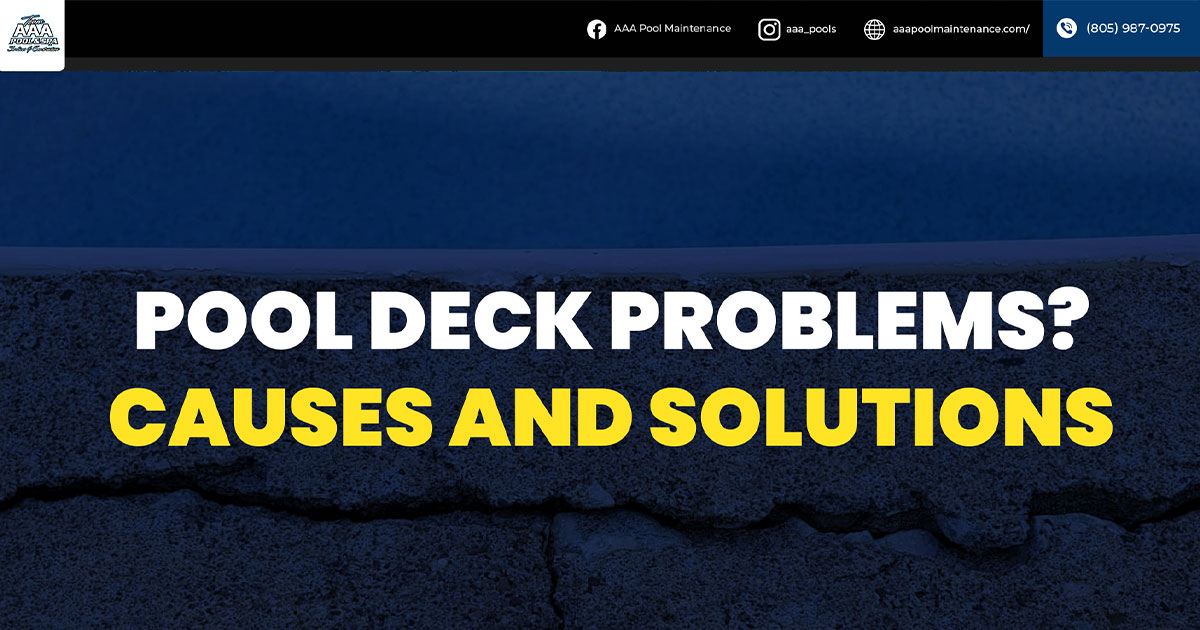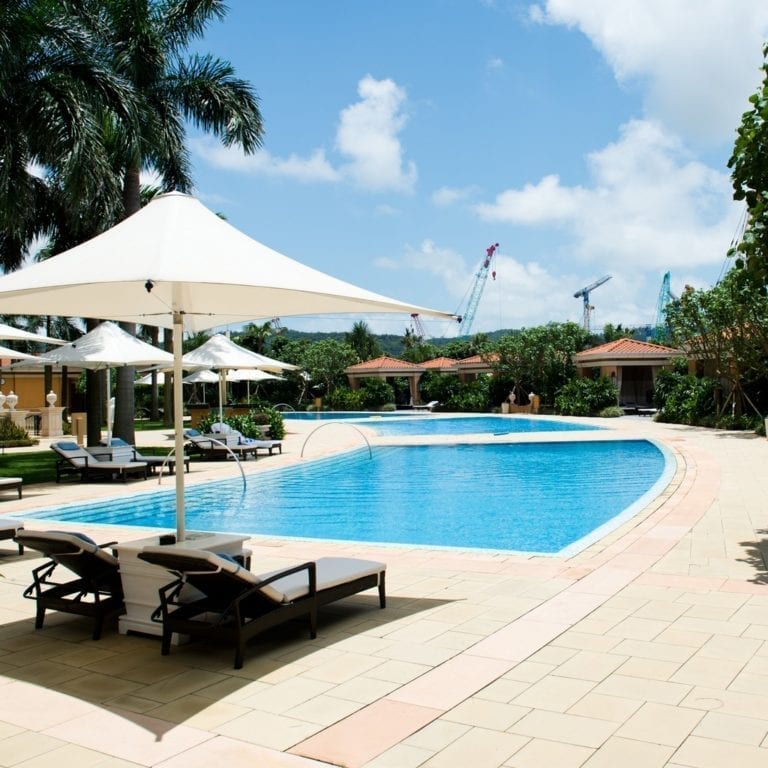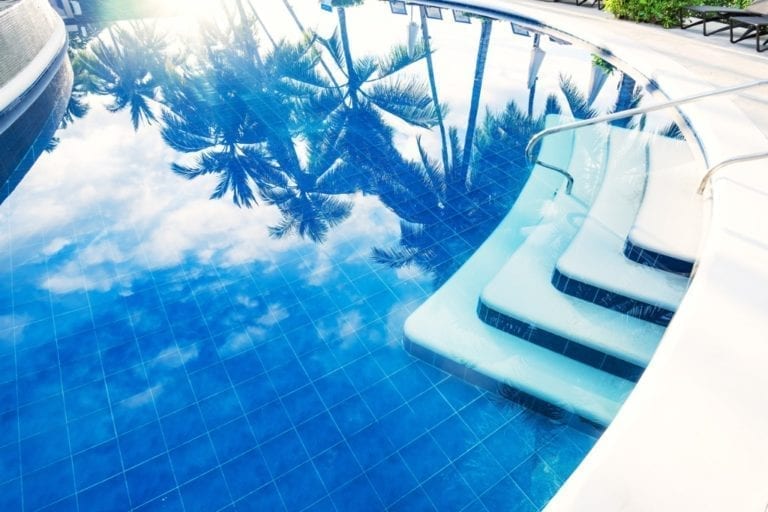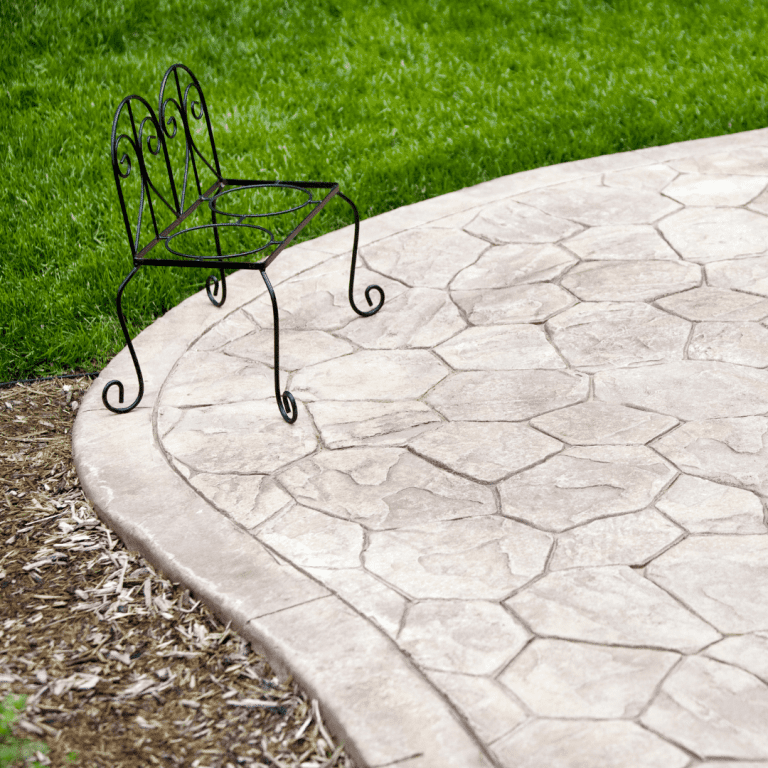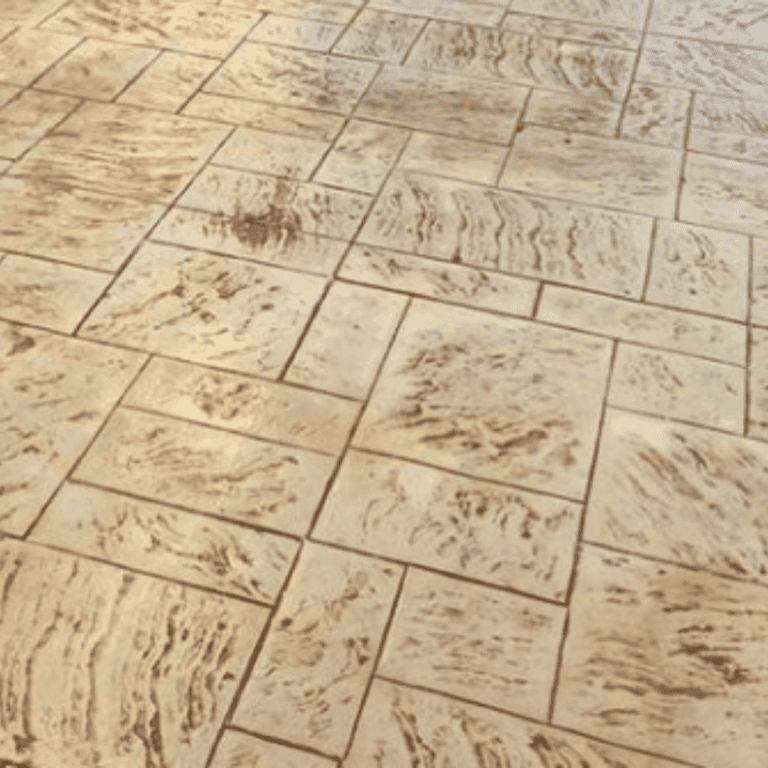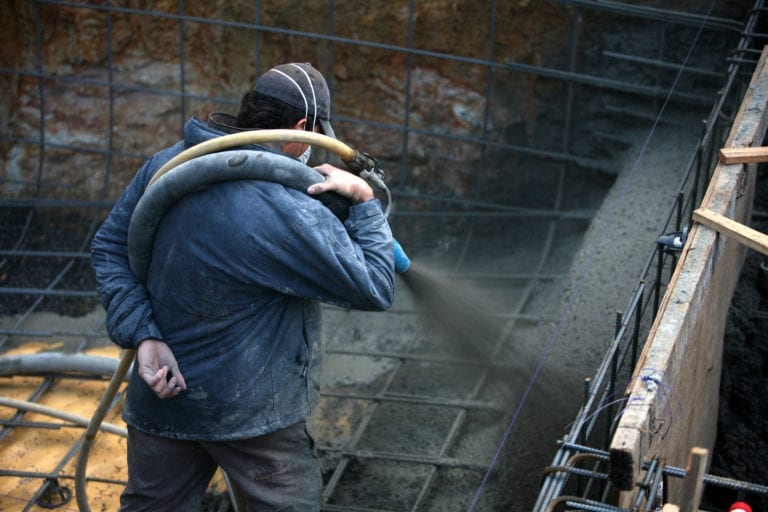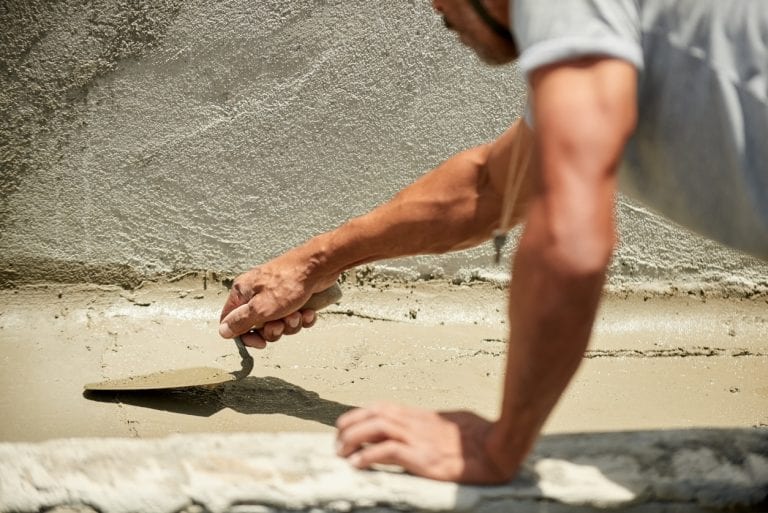Pool decks are a vital component of every swimming pool setup. Learn how to prevent common issues with pool decks, gain valuable insights, and maintain the pristine condition of your deck with expert tips from AAA Pool Maintenance’s experienced team of professionals. Discover a secure and captivating space for lounging, sunbathing, and poolside fun, accompanied by its fair share of challenges. In this guide, we’ll dive deep into the common Pool Deck Problems and Solutions.
Understanding Pool Deck Problems
Why Pool Decks Crack and Sink
Over time, pool decks may develop cracks over time, particularly those constructed with concrete. Several factors contribute to these cracks.
- Weather Conditions: Extreme temperature fluctuations can cause the concrete to expand and contract. This is especially true in areas with distinct seasons where freeze-thaw cycles can exacerbate the problem.
- Design/Construction Problems: Improper design and construction of the deck are likely to cause sinkage. The reasons behind this issue could be the usage of the incorrect type of concrete or insufficient reinforcement and drainage system.
- Soil Issues: Soil washout and erosion can undermine the foundation of the pool deck, leading to sinking or uneven surfaces. Hydrostatic pressure from groundwater can also push against the concrete slab, causing cracks.
To enhance the durability of your pool deck, fix any pre-existing cracks and take measures to prevent further damage. Depending on the severity of the issue, you may need to employ a combination of methods.
The Impact of UV Radiation
Exposure to direct sunlight and UV radiation can cause the pool deck surface to fade, peel, or become brittle. This affects the aesthetics and reduces the slip resistance of the deck, making it potentially hazardous.
Pool Deck Coatings: Benefits and Challenges
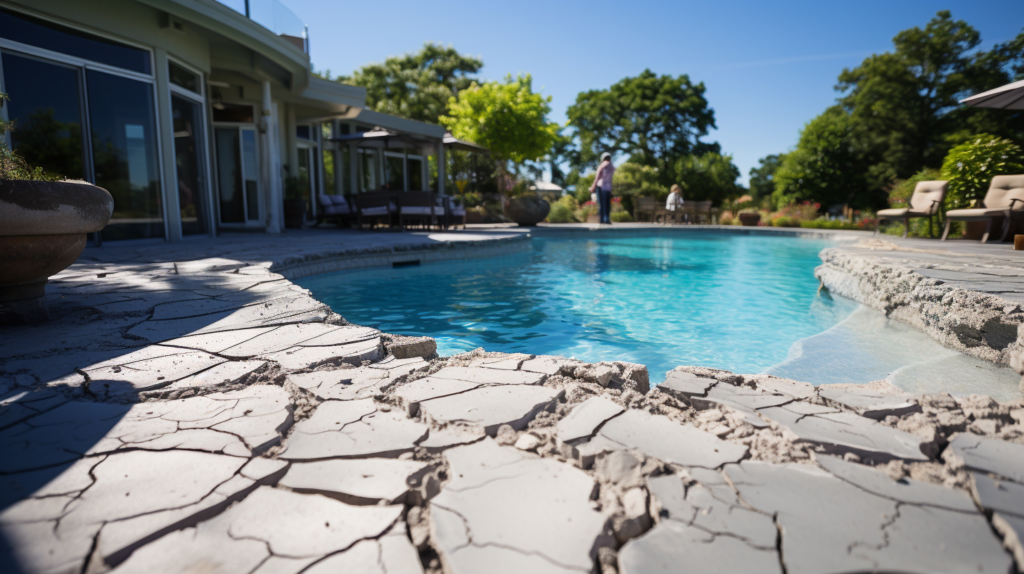
The Importance of Pool Deck Coatings
Coatings serve as a protective layer for the pool deck, enhancing its slip resistance and shielding it from UV radiation. They can also add a touch of aesthetics, especially if you opt for decorative concrete overlays.
Common Challenges with Pool Deck Coatings
Designers create pool deck coatings to:
- Protect the deck
- Enhance its appearance
- Provide additional safety features such as slip resistance
While these coatings offer numerous benefits, they also present certain challenges that homeowners and contractors should be aware of:
Chipping and Peeling
Chipping and peeling are frequent concerns with pool deck coatings. These issues can arise from various factors:
- Improper Application: Incorrect application of the coating might result in poor adherence to the pool deck surface. Surface preparation, inadequate coating thickness, excessive coating thickness, and insufficient drying time between coats can all lead to this issue.
- Physical Impact: Three factors can damage the coating: heavy objects falling on it, sharp objects scraping it, or excessive foot traffic.
- Chemical Exposure: Chlorinated pool water, cleaning agents, or other chemicals can react with certain coatings, leading to peeling or blistering.
UV Radiation
The sun’s Ultra-violet (UV) rays can be particularly harsh on coatings:
- Fading: Continuous exposure to sunlight can cause the color of the coating to fade over time. This not only affects the aesthetics but can also reduce the effectiveness of UV-resistant properties in certain coatings.
- Brittleness: UV radiation can break down the chemical bonds in some coatings, making them brittle. This can lead to cracking and flaking, especially in areas with high sun exposure.
- Reduced Lifespan: Exposure to UV rays for extended periods can greatly diminish the coating’s lifespan, requiring more frequent reapplications.
Solutions and Preventive Measures
To address these challenges:
- Choose the Right Coating: Opt for high-quality, UV-resistant coatings designed specifically for pool decks. Formulators design these coatings to withstand the unique challenges of pool environments.
- Regular Maintenance: Regularly inspect the pool deck for signs of chipping, peeling, or fading. Address minor issues promptly to prevent them from worsening.
- Use UV Protective Measures: Consider using shade structures, like pergolas or umbrellas, to reduce direct sunlight on the pool deck. This can help in prolonging the life of the coating.
Resurfacing Pool Decks: Why and How
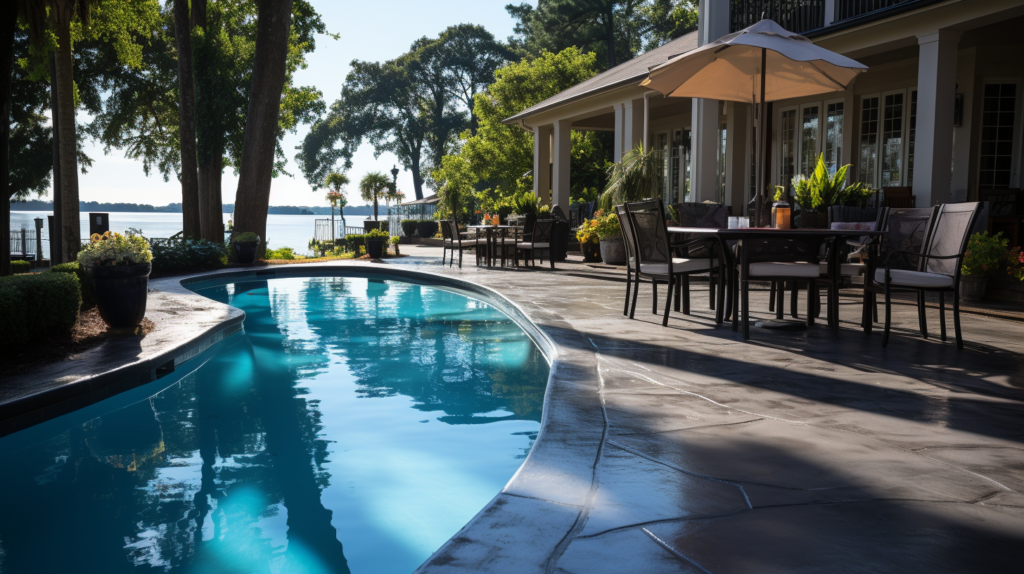
Resurfacing is a popular pool deck repair method. It involves adding a new layer to the existing deck, giving it a fresh and updated look. Resurfacing can address issues like hairline cracks, uneven surfaces, and faded coatings.
Benefits of Resurfacing
Resurfacing your pool deck offers both cost-effective and aesthetic benefits. Resurfacing your pool deck not only offers a more affordable alternative to complete replacement but also presents an opportunity to enhance the aesthetic appeal of your pool area.
With a wide range of pool deck ideas and materials to choose from, resurfacing allows you to transform your pool area into an inviting space that is visually appealing. Whether you want to refresh the appearance or add a touch of creativity, resurfacing can help you achieve these goals without exceeding your budget.
Challenges in Resurfacing
For the resurfacing process, proper surface preparation is crucial. This entails thoroughly cleaning the existing surface and, if necessary, performing sanding to ensure optimal adhesion of the new layer.
Please choose suitable weather conditions for the resurfacing project to achieve the desired results. Remember that rain or extreme temperatures can harm the result, so resurface when the weather is perfect.
Preventive Measures and Maintenance Sealing Small Cracks
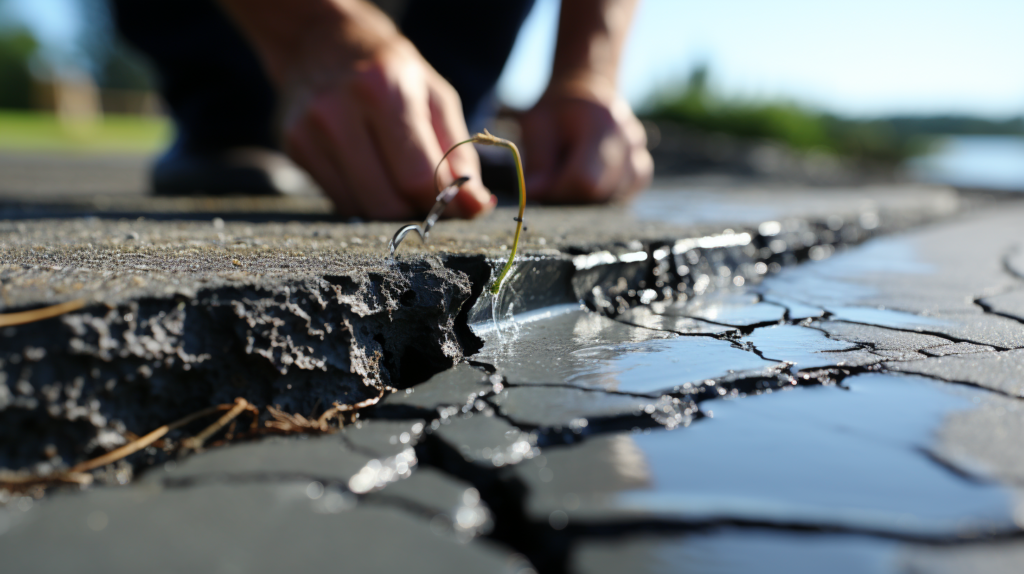
Addressing small cracks early on can prevent them from widening and potentially causing more damage. One effective solution is to use a high-quality sealant specifically designed for filling concrete pool deck cracks.
By applying this sealant, you can prevent water from seeping into the cracks while also extending the overall lifespan of the deck with a protective barrier. Taking these proactive measures can save you time, money, and keep your pool deck in great condition for years to come.
Managing Slope Creep and Ground Water Levels
Cantilevered Concrete Pool Decking: Cantilevered decks extend over the edge of the pool, giving a seamless look. However, they require precise construction techniques to prevent deck cracking or shifting issues.
Ensuring Proper Bonding of Leveling Courses: For decks that have multiple layers, proper bonding between layers is crucial. This prevents issues like water splashing between layers, which can lead to bigger problems down the line.
Wrapping Up
Pool decks go beyond being functional spaces; they elevate the entire pool experience. Regular maintenance is important for keeping your pool deck safe and attractive for a long time. It is essential to promptly fix any problems that arise and stay aware of common issues. Get in touch with AAA Pool Maintenance’s experienced team of professionals for a safe pool.
FAQs
- What is the best pool deck material?
There are various materials like concrete, pavers, and wood. The best material depends on your aesthetic preference, budget, and maintenance willingness.
- How often should I seal my pool deck?
Experts advise sealing concrete pool decks every 2-3 years, depending on the sealant and exposure to external elements.
- Can I fix cracks in my pool deck myself?
You can fix small hairline cracks by using sealants available in home improvement stores. However, if the cracks are larger or if you’re unsure about the repair, it’s best to consult with deck repair professionals.

